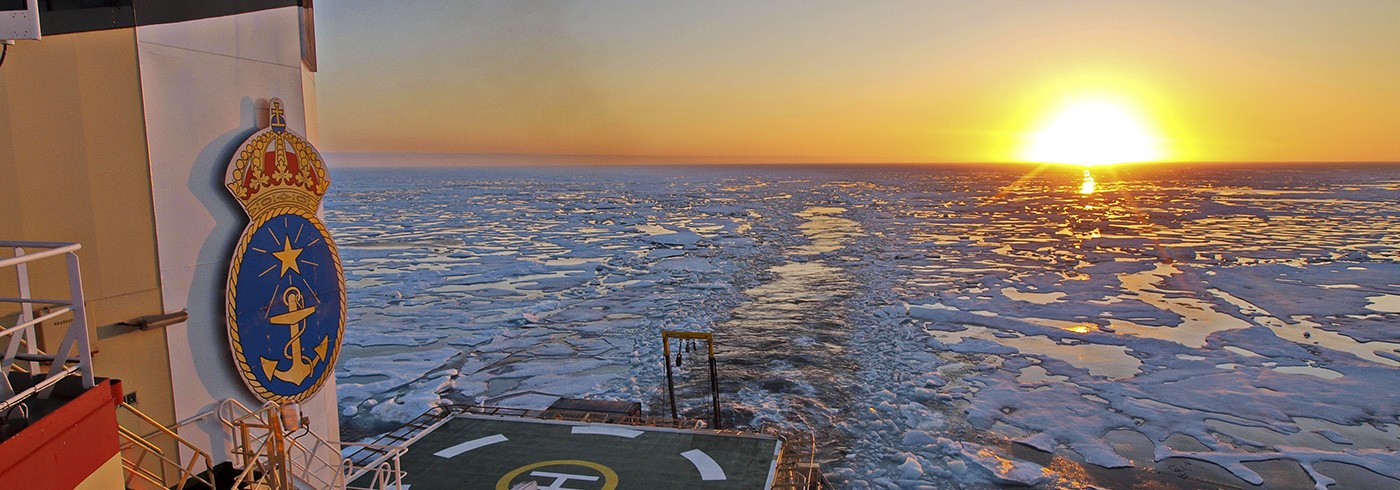SWERUS-C3 – expedition summary
5 July 2014 - 4 October 2014
Schematics of key components of the Arctic climate-cryosphere-carbon (C3) system that are addressed by the SWERUS-C3 programme. The insets a-f illustrates the Arctic C3-system in focus for the SWERUS-C3 two-leg expedition. a,b) Sonar images of gas plumes in the water column caused by sea floor venting of methane (a: slope west of Svalbard (Westbrook et al., 2009); b: East Siberian Arctic Ocean (Shakhova et al., 2010). c) Coastal erosion of organic-rich Yedoma permafrost, Muostoh Island, south-east Laptev Sea. d) Multibeam image showing pockmarks from gas venting off the East Siberian shelf. e) Distribution of Yedoma permafrost in north-east Siberia. f) Multiple transport, conversion, and venting processes of released permafrost organic matter, CH4 and CO2.
The Swedish-Russian-US Arctic Ocean Investigation of Climate-Cryosphere-Carbon Interactions (SWERUS-C3) program was initiated as a research project funded by Knut and Alice Wallenberg. The project was developed into a multi-disciplinary international research program investigating the contemporary and historical functioning of the climate-cryosphere-carbon (C3) system of the East Siberian Arctic Ocean (figure 1). A two-leg expedition on the Swedish research icebreaker Oden constituted the central part of SWERUS-C3.
The SWERUS-C3 expedition consisted of two 45-day legs. Leg 1 started on 5 July from Tromsø Norway and worked along the Siberian continental shelf towards Barrow, Alaska, where both scientific personnel and crew were replaced. Leg 2 departed from Barrow on 21 August, and this part of the expedition took Oden farther out from the Siberian continental shelf and slope into the deep central Arctic Ocean.
SWERUS-C3 focused on the East Siberian Arctic Ocean because it is experiencing the fastest rates of climate warming and because it likely hosts vast stores of potentially vulnerable carbon. The objectives of the SWERUS-C3 research program can be summarized as follows: to quantitatively address processes central to Arctic Ocean climate change feedbacks (figure 1), specifically:
- CH4 release from subsea permafrost and deep sea: What are the mechanisms and magnitudes of CH4 release to the atmosphere? What are the characteristics of permafrost and gas hydrate stability fields of Arctic subsea CH4 pools and how will they respond to increased ocean warming?
- The fate of carbon in the shelf sea released from thawing coastal permafrost: Will it be subject to microbial degradation resulting in CO2 fluxes to the atmosphere, or will re-sequestration occur through sediment burial and off-shelf export?
- The historical (recent/post-glacial/paleoclimate) sedimentary record of permafrost carbon releases: Is the present carbon release from thawing permafrost unprecedented since the last glacial period?
- History of Arctic sea ice and its impact on carbon fluxes: Has a perennial Arctic sea ice cover prevailed throughout the post-glacial period or have sea-ice free summers existed previously?

